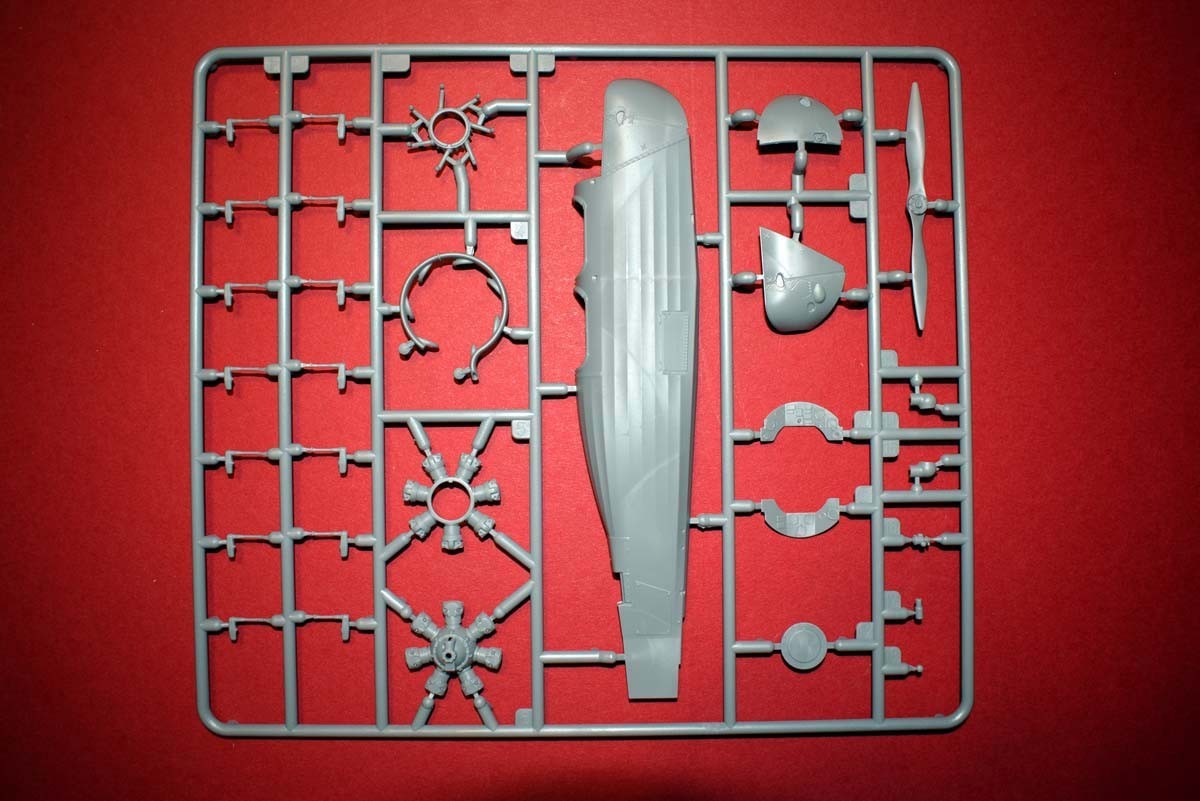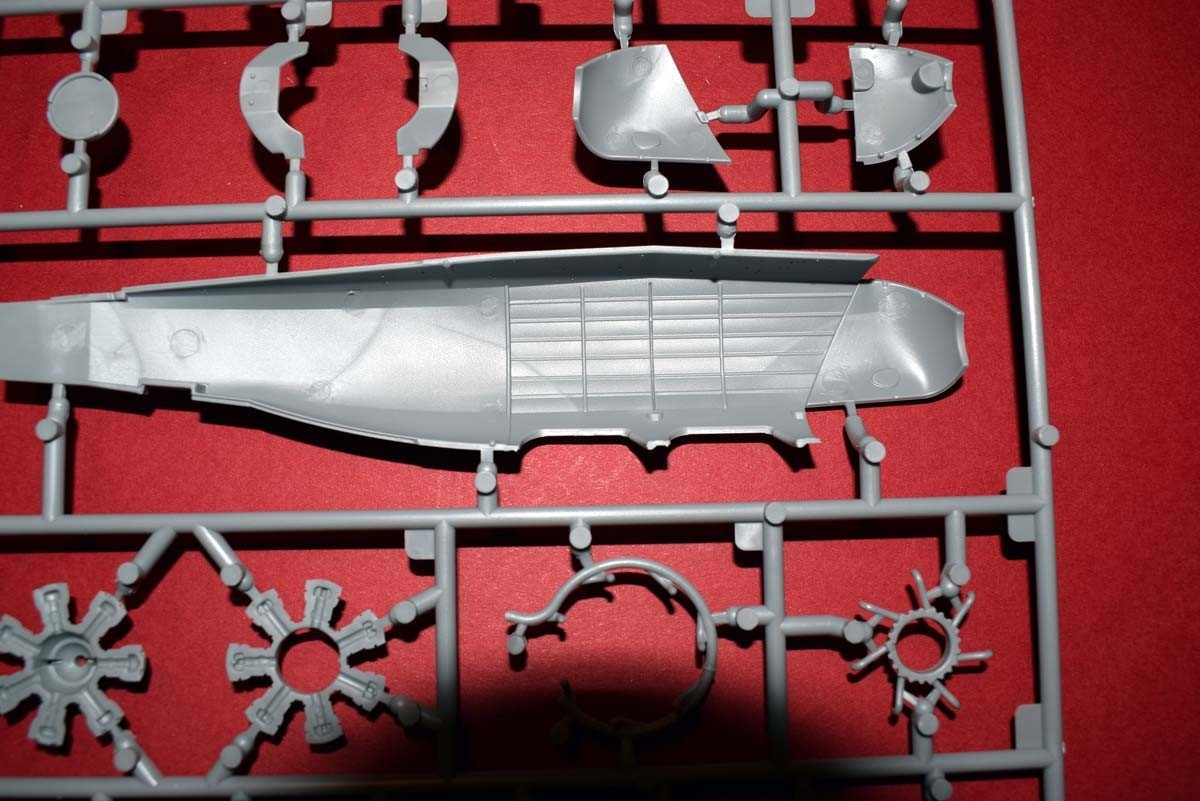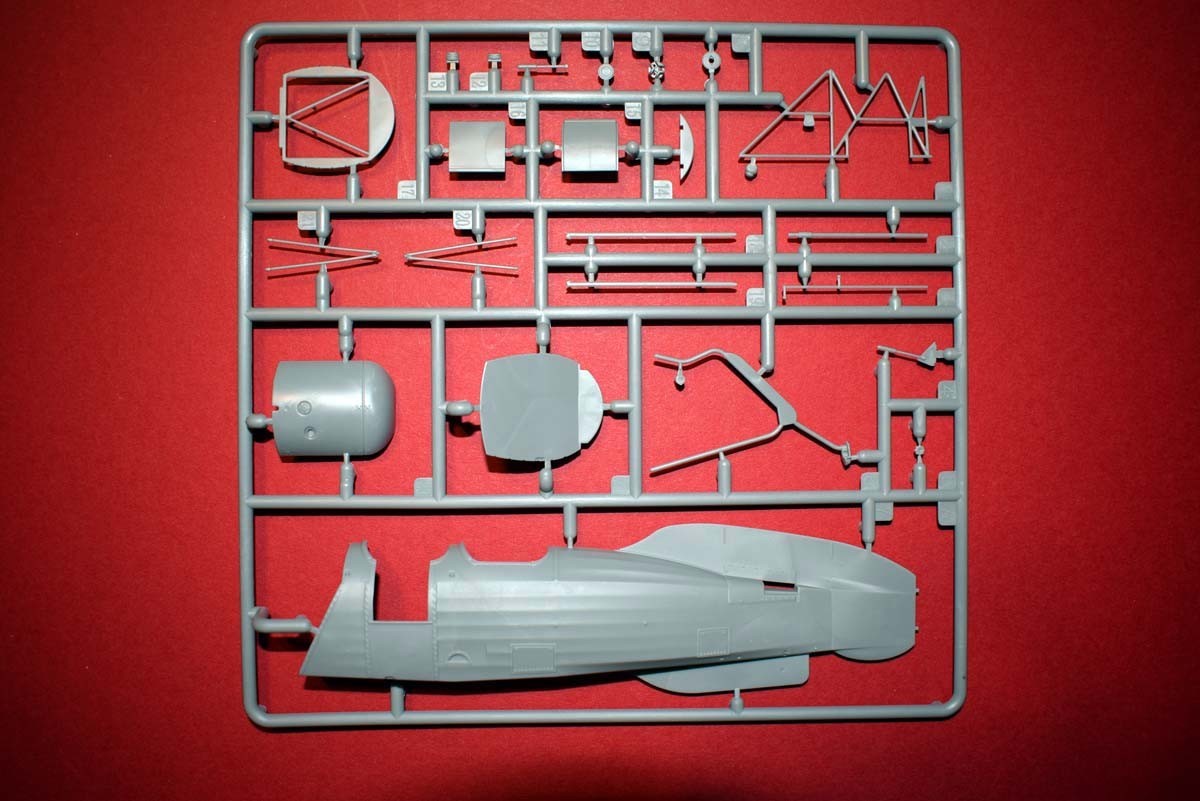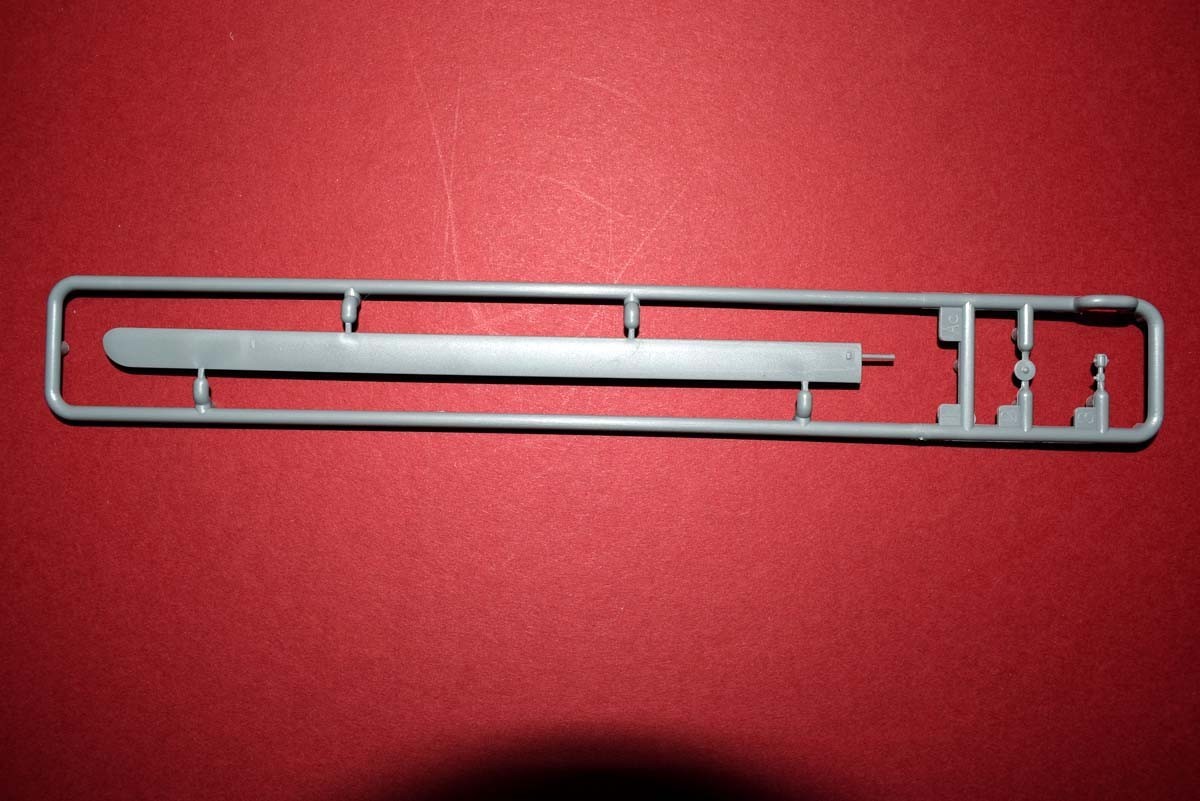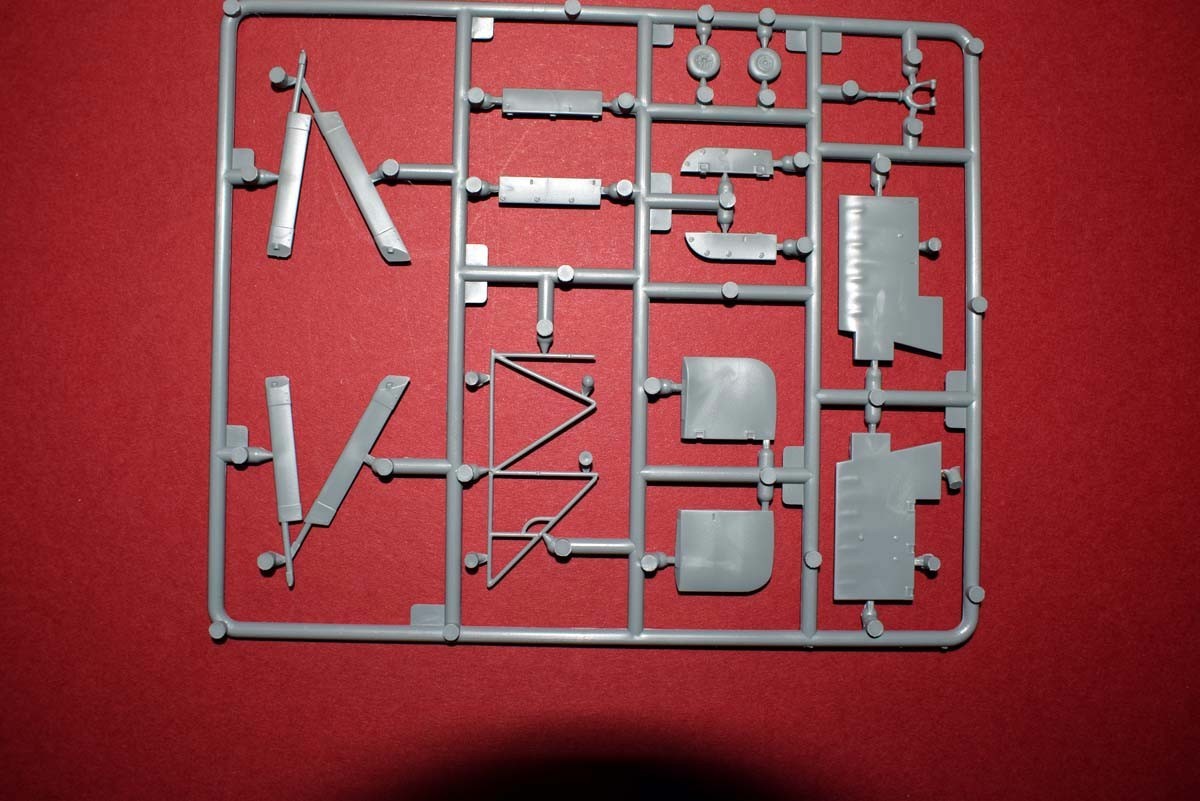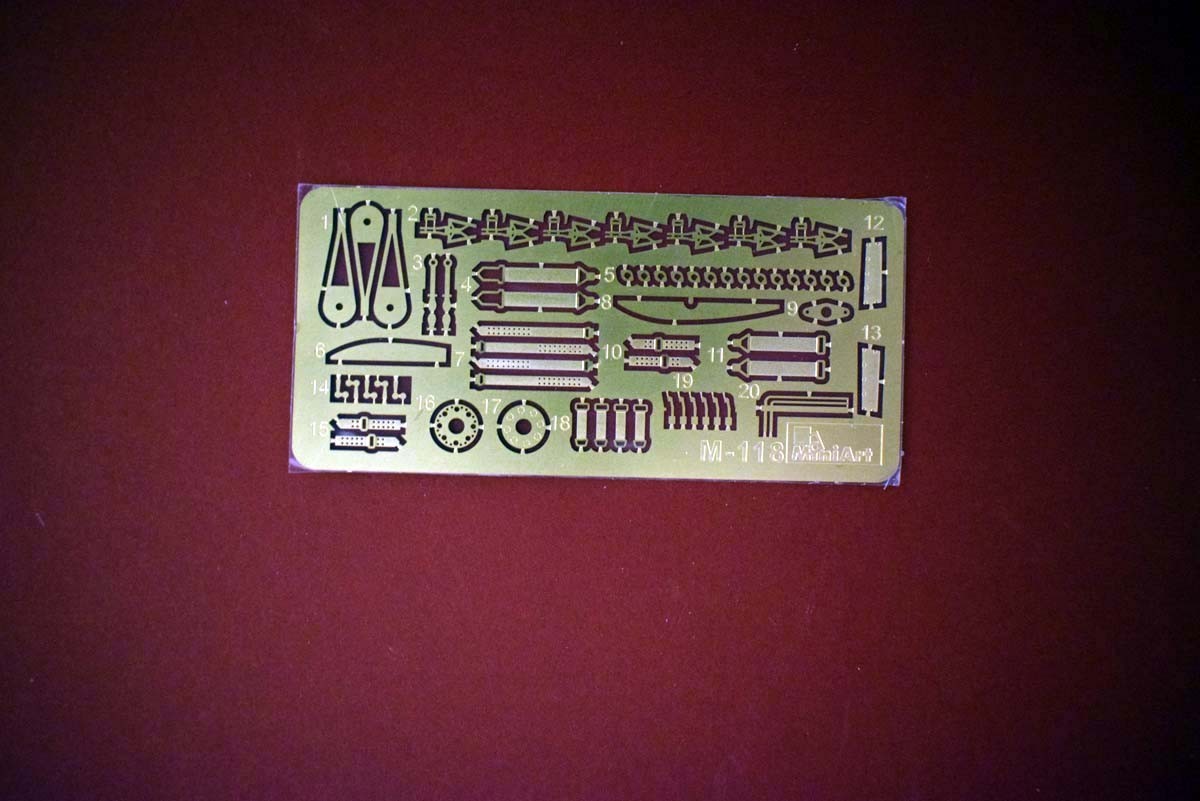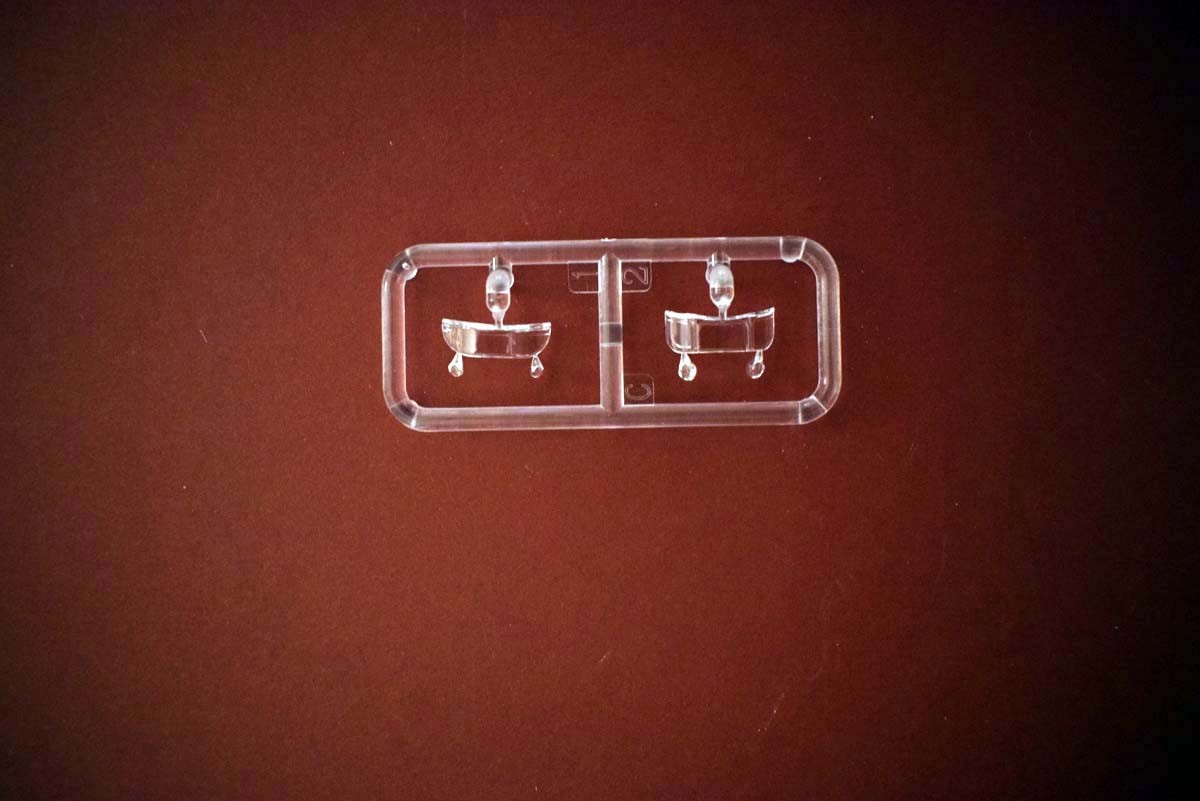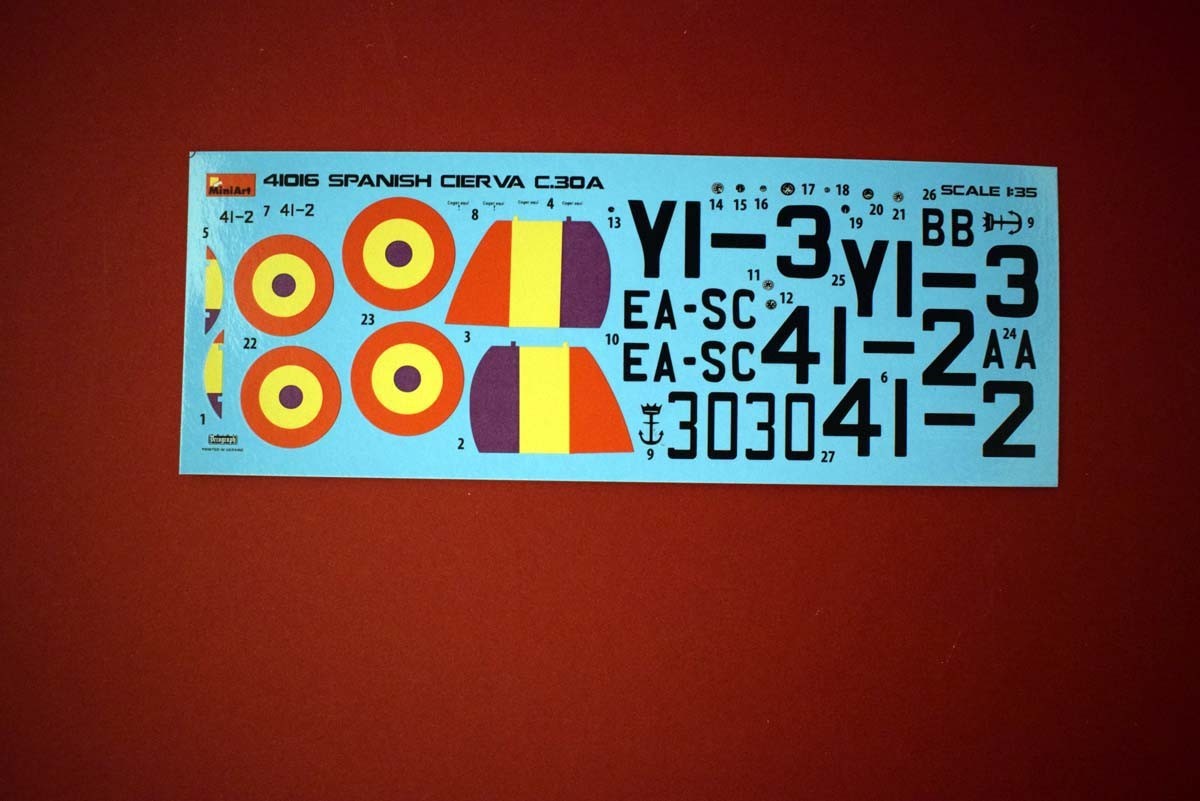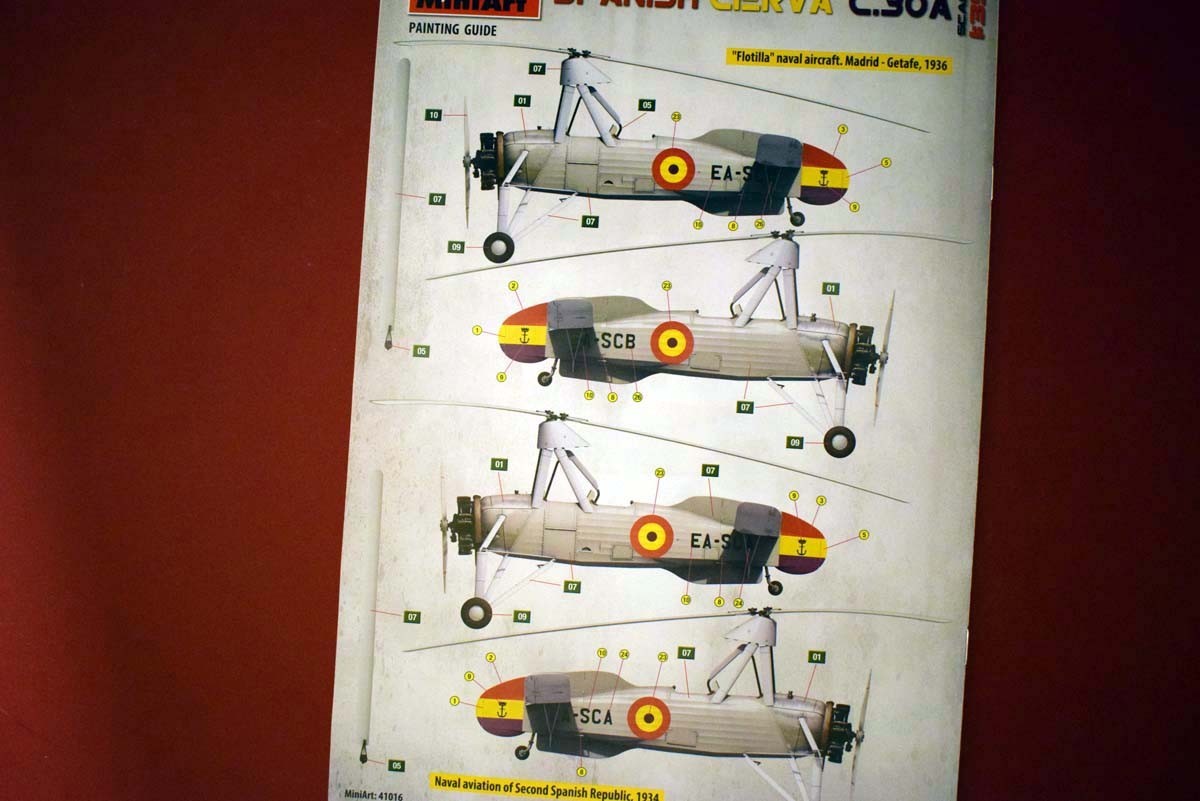
Introduction
The auto gyro line of aircraft released by MiniArt has a new addition to it recently. This time it is a Spanish Cierva C.30A to get the MiniArt’s attention in 1/35th scale. This aircraft was designed by Don Juan De La Cierva in 1924. The aircraft came about when Don Juan De La Cierva mounted a freewheeling rotor on a pylon to the fuselage of an Avro 504, and after some re-designs to remove the control surfaces of a standard aircraft and switching to a movable top rotor, the aircraft became reliable in use.
Review
This offering from MiniArt is supplied in a cardboard tray with a separate card lid. The model parts are supplied in a single plastic bag, and inside of that is another small plastic bag with the clear parts and decals - which I do not like, as this leave the decals open to damage, and also has a card envelope that contains a photo etch fret. I am disappointed that such a large box has been utilised, for such a small number of parts with the only thing taking up the width and the length of the box being the instruction booklet. Access to parts on the sprues is good, with the only concern being removal of parts due to their finesse.
The engine that would drive this aircraft forward is well detailed with good cylinder head detailing. A reasonable amount of photo etch is utilised, and some of these pieces are very small. I do have a small concern which may be warranted or not, and I question if the same engine is utilised across the entire range of aircraft, as I cannot recall seeing any changes in its design and I do not know if this is an accurate representation.
The cockpit area of the model has a nice degree of detail provided, specifically photo etch harness detail for the pilot’s seat. Replication of the framework of the fuselage, photo etch has also been utilised for throttle quadrants. The instrument dials have been replicated using decals, and the result from them box should be quite pleasing, as the final finishing touch is some detail on the fuselage halves themselves. The pylon and its controls for the upper rotor is well replicated, and so an out of the box build should meet with the expectations of a large number of modellers. The tail assembly has the remnants of the flight controls, and these have been provided separately and so can be positioned as desired. The front wheel assemblies on their out riggers will require a little care during their application, as they are quite fragile. The freewheeling rotor blade on the top of the auto gyro has been provided with the ability to show them deployed in use, or folded for storage. Photo etch is utilised in this location as well, and the modeller will need to decide which orientation they prefer as alternate assembly is required depending on what you decide. Five finishing options have been provided by MiniArt and these are all very similar in finish, these are as follows:
School of Observers, Mardrid-Getafe, 1934
Spanish Military Aircraft, Grupo 21, Madrid-Cuatro Vientos, 1935
Naval Aviation of 2nd Spanish Republic, Civil War, 1936
Floatiller Naval Aircraft, Madrid-Getafe, 1936
Naval Aviation of 2nd Spanish Republic. 1934
Conclusion
This release from MiniArt and its appeal really comes down to what you want as a modeller. As other than a release on skids, all of the releases are fundamentally the same. While the version that flew during the Berlin Olympics is the version best known, and the camouflaged version used by the RAF holds visual appeal. This release with white fuselage the red, yellow and purple country insignia with broad coloured lines in some cases does give this Spanish release its own level of appeal, and of course it is the aircraft that started the line.
